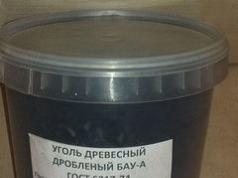Blooming Sally or fireweed
Ivan-tea or Fireweed is a perennial herbaceous plant 50 cm -150 cm high, with long, narrow leaves and beautiful crimson, purple-red flowers, which are arranged in elongated racemes. It grows throughout the northern hemisphere. On the territory of Russia, it is distributed in the European part and Siberia. It grows well on felling sites and after fires for 3 years, then it is replaced by other plants. Easily adapts to different types of soil. Wet ground and cold weather are fine.
In swampy areas, fireweed gives less nectar, and loves clay soil rich in humus more, as well as on sandy-stony ground. Flowering continues from late June to September (until frost).
Nectar is secreted by the green fleshy top of the ovary, where rain does not fall and there is free access for insects. Honey bees, bumblebees, flies, butterflies and other insects enjoy visiting the flowers of Ivan Chai, which has beautiful greenish pollen, whose grains are interconnected by sticky threads. Flowers are odorless.
Warm days and cold nights contribute to the release of a large amount of nectar. Fireweed gives bees a longer bribe than clover. Most of the summer (July and August) the flowers produce nectar, even in the cold north wind, when all nectar production ceases in linden and clover. But it is not always possible to rely on bribes from fireweed: abundant rains in spring and dry summers can adversely affect the plant. Unfortunately, the best places to get fireweed honey are not easily accessible.
Fireweed honey is the lightest and sweetest, transparent greenish color, with a mild aroma, delicate spicy taste.  Ivan-chai, as a honey plant, can take first place among herbaceous plants in the forest and in the fields.
Ivan-chai, as a honey plant, can take first place among herbaceous plants in the forest and in the fields.
Fireweed reproduces in two ways: by seeds of the fruit and with the help of the root system.
The fruit (box) contains a large number of seeds with hairs. When the box opens, then, thanks to the hairs, the seeds fly like a parachute over long distances.
The fireweed root can reach 6 meters in length. If the plant grows in the shade, then it quickly withers and falls off. Then it puts out a big long root to come out of the shadow. The brighter the light, the brighter the color of Ivan-tea. After a fire, fireweed can grow densely not from seeds, but from rhizomes.
So here they are "Parachutes of Happiness", which we caught in childhood! It turns out these are the seeds of fireweed!
Fireweed is the most valuable honey plant! Every beekeeper experiences real joy while working in the apiary, where Ivan-chai grows nearby!
Fireweed is very common in alternative medicine! Great teas, various infusions and decoctions are made from it, which contribute to the treatment of viruses and diseases.
Ivan - narrow-leaved tea - Chamerion angustifolium (L.)Holub. Herbaceous and shrubby forest plants - honey plants.
Ivan tea is a perennial herbaceous plant of the fireweed family (Onagraceae), 60-120 cm high, with erect, cylindrical, slightly branched stems. Ivan-tea leaves are alternate sessile, lanceolate, pointed, dark green, bluish-green below, purple-pink flowers, collected in a long terminal raceme. Ivan-tea corolla with four petals. Calyx deep, four-parted, eight stamens, pistil with four-parted stigma and lower ovary. The fruit is a long, four-sided pod-like capsule. Ivan-tea seeds are numerous, with a fluffy white tuft.
Ivan-tea narrow-leaved is distinguished by a long flowering time (1-2 months), and flowers - by an abundance of nectar. During flowering, one flower releases from 0.46 to 25.0 mg. Honey productivity thickets of willow-tea reaches 350–500 kg/ha. The honey productivity of one plant is 0.79 g, one flower is 9.8 mg.
Ivan-chai also has a high pollen content.
Ivan-tea often grows along with raspberries in fresh cutting areas and burnt areas. In the taiga regions of the European part and Siberia, control hives show daily honey yields of up to 10–14 kg. Quite widespread throughout the Non-Chernozem zone. Often forms continuous thickets. In many places it is one of the main honey plants. In terms of distribution and honey productivity, it has no equal.
blooms from June to August. bees very actively visit the flowering plant Ivan-tea.
Fireweed honey in liquid form it is watery-transparent, with a greenish tinge, in a crystallized state it is almost white. A fine-grained, greasy mass crystallizes quickly. The aroma is very delicate, but slightly pronounced, the taste is pleasant. It has long been used as a sedative, anti-inflammatory and enveloping agent for gastritis with high acidity, peptic ulcer of the stomach and duodenum. They successfully treat throat diseases, constipation, chronic diseases of internal organs. In Tibetan medicine, it is used for diseases of the mucous membranes and skin. This honey stimulates blood formation and increases the protective properties of the body, and dissolved in warm water has a beneficial effect on insomnia and headaches, normalizes bowel activity, and is useful for nursing mothers.
Blooming Sally is a medicinal plant. Ivan-chai has long been known in Russia as "Koporsky tea". Tea was made from its leaves, which was in demand far beyond the borders of the St. Petersburg province. Fireweed angustifolia has astringent, hemostatic, mild laxative, emollient, wound-healing effect and a weak soporific property. An aqueous infusion of the herb is taken internally for headaches and insomnia and as a uterine remedy. Crushed leaves are applied to wounds.
pollen grains Ivan tea three-pore, spherical shape. Diameter 4.8-8.4 microns. Rounded-triangular in outline from the pole, with pronounced pores, rounded from the equator. The pores are round, intrarim, 17-20 microns in diameter; pore membrane tuberculate. Mesoporium width 61.2-68.8 µm. The exine in the center of the mesoporium is 1.6-1.8 µm thick, near the pores it is thickened up to 7 µm. The sculpture is thin, smoothed-tuberculate. The color of the pollen is yellow-green.
Herbaceous and shrubby forest plants - honey plants
Ivan - narrow-leaved tea - Chamerion angustifolium (L.) Holub.
Perennial herbaceous plant of the fireweed family (Onagraceae), 60-120 cm high, with erect, cylindrical, slightly branched stems. The leaves are alternate sessile, lanceolate, pointed, dark green, bluish-green below, purple-pink flowers, collected in a long terminal raceme. Corolla with four petals. Calyx deep, four-parted, eight stamens, pistil with four-parted stigma and lower ovary. The fruit is a long, four-sided pod-like capsule. Seeds are numerous, with a fluffy white tuft. Quite widespread throughout the Non-Chernozem zone. It grows in forest clearings, burnt areas, peat bogs, along railways and highways, along the edges of reclamation canals. Often forms continuous thickets. In many places it is one of the main honey plants. In terms of distribution and honey productivity, it has no equal.
blooms from June to August. bees very actively visit this flowering plant. honey productivity Ivan tea high and depending on weather conditions is 120-600 kg per 1 ha.
Fireweed honey in liquid form it is watery-transparent, with a greenish tinge, in a crystallized state it is almost white. A fine-grained, greasy mass crystallizes quickly. The aroma is very delicate, but slightly pronounced, the taste is pleasant. It has long been used as a sedative, anti-inflammatory and enveloping agent for gastritis with high acidity, peptic ulcer of the stomach and duodenum. They successfully treat throat diseases, constipation, chronic diseases of internal organs. In Tibetan medicine, it is used for diseases of the mucous membranes and skin. This honey stimulates blood formation and increases the protective properties of the body, and dissolved in warm water has a beneficial effect on insomnia and headaches, normalizes bowel activity, and is useful for nursing mothers.
pollen grains Ivan tea three-pore, spherical shape. Diameter 4.8-8.4 microns. Rounded-triangular in outline from the pole, with pronounced pores, rounded from the equator. The pores are round, intrarim, 17-20 microns in diameter; pore membrane tuberculate. Mesoporium width 61.2-68.8 µm. The exine in the center of the mesoporium is 1.6-1.8 µm thick, near the pores it is thickened up to 7 µm. The sculpture is thin, smoothed-tuberculate. The color of the pollen is yellow-green.
Blooming Sally is a medicinal plant. Ivan-chai has long been known in Russia as "Koporsky tea". Tea was made from its leaves, which was in demand far beyond the borders of the St. Petersburg province. Fireweed angustifolia has astringent, hemostatic, mild laxative, emollient, wound-healing effect and a weak soporific property. An aqueous infusion of the herb is taken internally for headaches and insomnia and as a uterine remedy. Crushed leaves are applied to wounds.








